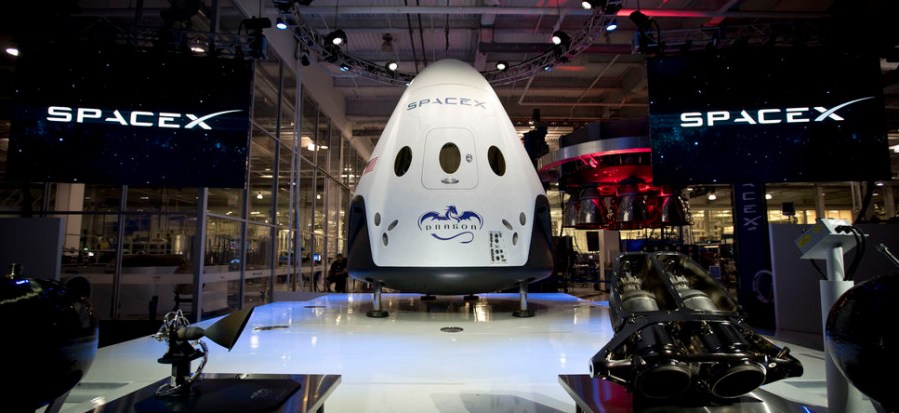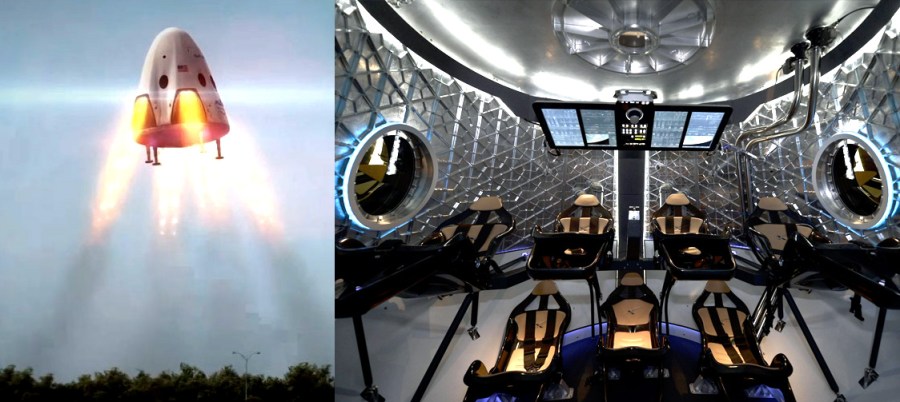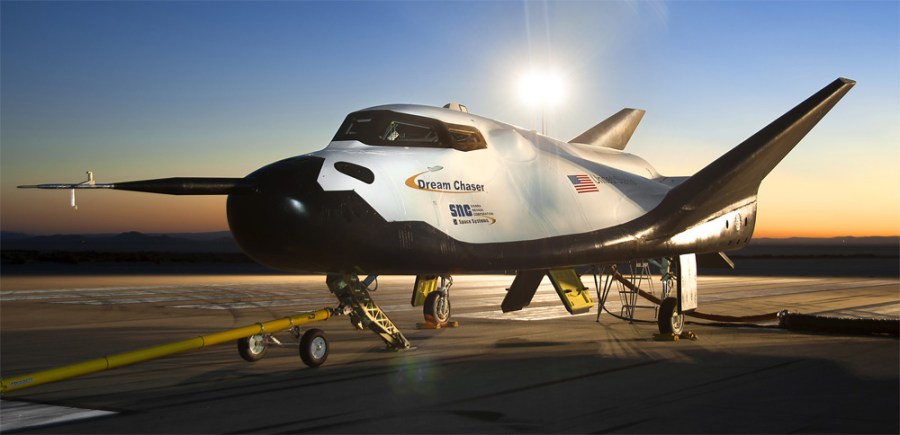A number of milestones were reached recently along the path toward the commercialization of space travel. The most notable was NASA’s awarding Boeing with a second order for carrying astronauts to the space station aboard the iconic company’s Starliner space capsule. It awarded a similar contract to SpaceX for use of its Dragon spacecraft. The two companies were in a competition to provide their services to NASA. Apparently Boeing won most of the categories of the test, which is presumably why it has two contracts and $4.6B to SpaceX’s one and $2.6B.
Each of the capsules is capable of holding seven astronauts to low earth orbit. Today, NASA pays Russia more than $70M per astronaut it sends to orbit. Considering the current political climate, paying a country we’re imposing economic sanctions on us a bit awkward at best. When these two capsules become operational, the country saves both money and face
Absent from the any NASA crew transport contracts, was the Sierra Nevada Corporation (SNC) with its Dream Chaser spacecraft. It was the odd one out and let go a portion of its staff in response. It still has hopes to get in the game, however.
UPDATE: SNC was awarded cargo missions for the Dream Chaser on January 14th. Personally, I think this is great news. More players means more innovation.
UPDATE #2: SNC is now getting a $36M boost from the European Space Agency (ESA).
Boeing CST-100 Starliner
T he CST-100 Starliner (CST = Crew Space Transportation) bears an outward resemblance to the space capsules of old. But appearance and base function are where the similarities end. First, the CST is much larger than any capsule previously used, capable of carrying up to seven astronauts, or a combination of astronauts plus cargo. The default combination is five crew. Like other capsules, a heat shield on the bottom of the spacecraft protects it from the extreme temperatures of reentry. Also like other capsules, parachutes arrest the Starliner’s fall once it gets far enough into the atmosphere. But for the first time on an American capsule, it will touch down on land, not in the ocean. Only Russian capsules have done this before – and they’re pretty good at it. Where the Russian ones, such as the current Soyuz, use retrorockets to ease the landing, the Starliner will use giant air bags. Other design innovations include the same LED lighting used in the 787 Dreamliner, wireless internet and use of tablets for crew interfaces. It will launch on the Atlas V rocket and automatically dock with the Space Station, reducing the crew training required.
he CST-100 Starliner (CST = Crew Space Transportation) bears an outward resemblance to the space capsules of old. But appearance and base function are where the similarities end. First, the CST is much larger than any capsule previously used, capable of carrying up to seven astronauts, or a combination of astronauts plus cargo. The default combination is five crew. Like other capsules, a heat shield on the bottom of the spacecraft protects it from the extreme temperatures of reentry. Also like other capsules, parachutes arrest the Starliner’s fall once it gets far enough into the atmosphere. But for the first time on an American capsule, it will touch down on land, not in the ocean. Only Russian capsules have done this before – and they’re pretty good at it. Where the Russian ones, such as the current Soyuz, use retrorockets to ease the landing, the Starliner will use giant air bags. Other design innovations include the same LED lighting used in the 787 Dreamliner, wireless internet and use of tablets for crew interfaces. It will launch on the Atlas V rocket and automatically dock with the Space Station, reducing the crew training required.
SpaceX Dragon 2
 Where Boeing’s vehicle might be considered a throwback in its design, there is nothing that could be considered such in the SpaceX Dragon 2 vehicle. Everything about this capsule is modern and cutting edge. From the sci-fi-like interior to the power landing capabilities, it is clear that SpaceX is aiming to be a player for some time to come. The vehicle mounts eight SuperDraco engines and sixteen Draco thrusters. The engines and thrusters serve multiple purposes. The primary uses are for maneuvering in orbit and for arresting landing. Unlike other capsules that use parachutes to slow their fall back to Earth, Dragon can use its rocket engines to slow the descent and ultimately land back on Earth. Parachutes are available should there be a problem while in this mode. It should be noted that in the SpaceX entry for NASA, a parachute water landing was proposed. The secondary use of the engines is one no other spacecraft has had. Launch vehicle reliability is a major concern when launching crew into space. The Dragon adds a layer of safety by being able to jettison free of a malfunctioning rocket during launch and use its engines to fly clear and land on its own.
Where Boeing’s vehicle might be considered a throwback in its design, there is nothing that could be considered such in the SpaceX Dragon 2 vehicle. Everything about this capsule is modern and cutting edge. From the sci-fi-like interior to the power landing capabilities, it is clear that SpaceX is aiming to be a player for some time to come. The vehicle mounts eight SuperDraco engines and sixteen Draco thrusters. The engines and thrusters serve multiple purposes. The primary uses are for maneuvering in orbit and for arresting landing. Unlike other capsules that use parachutes to slow their fall back to Earth, Dragon can use its rocket engines to slow the descent and ultimately land back on Earth. Parachutes are available should there be a problem while in this mode. It should be noted that in the SpaceX entry for NASA, a parachute water landing was proposed. The secondary use of the engines is one no other spacecraft has had. Launch vehicle reliability is a major concern when launching crew into space. The Dragon adds a layer of safety by being able to jettison free of a malfunctioning rocket during launch and use its engines to fly clear and land on its own.

Dream Chaser
As mentioned at the beginning of the article, the Dream Chaser didn’t make the cut, which is disappointing because it is arguably a more versatile design, gliding back to Earth like the Space Shuttle. I’m including it in the article because SNC still hopes to get NASA contracts ferrying cargo to orbit. It is currently planned to be launched by an Atlas V rocket, but any number of launch vehicles could work.

Dream Chaser is a lifting body, meaning it doesn’t use traditional wings to glide, instead relying on lift provided by its hull. It is based on NASA’s HL-20 experimental aircraft designed in the 1990s. NASA funded much of the design and development, but that wasn’t enough to help it win a seat at the table to carry crew to space. SNC filed a protest, but didn’t prevail.
Conclusions
So why did Boeing win and SpaceX place second in the competition to provide commercial crew space transport services to NASA? The actual scoring from the competition has not been made public, so everything I’m about to write is pure supposition.
NASA is risk averse. Everything it flies has a minimum of triple redundancy and relies on known technology. The Boeing design is the most basic and I can see why people scoring the contenders would prefer it. It is similar to spacecraft NASA has flown before and there is nothing really new about its base functionality. Boeing also has a storied history with the space program and a solid track record. If you want to avoid risk, go with the known commodity.
The Dragon 2 is a mix of known (capsule) and new (engines for landing), but SpaceX was smart in that it didn’t force the engine landing thing, instead having the option for parachute ocean landings. Had it forced its original usage, I believe NASA would have tossed it away. NASA likes to have options and Dragon gives them that when paired with the Starliner while not introducing too much risk.
In the Dream Chaser, I’m guessing NASA saw too much of the Space Shuttle. Both capsule designs protect the most important component of the spacecraft (the heat shield) during launch. While Dream Chaser doesn’t have nearly the exposure to it that the Shuttle did, it is still much more exposed than the other two craft. I can’t help but think that this played a part. Lastly, an aerodynamic reentry is more complex than the ballistic reentry the capsules perform. This requires more training and introduces more risk.
So the least risky entrant won the competition to become America’s space taxi. It should be no surprise that the second least risky came in second, and the riskiest third.
Photo credits: NASA, SNC, Boeing, SpaceX

Spacex didn’t lose, they just put in a bid with a lower price. In addition, Boeing didn’t win two contracts, Spacex did, and that picture you provided is dragon 1 not dragon 2
Hi Bryan,
Thanks for the catch on the image. I changed it out. As to the contracts, The following NASA press release is pretty clear about Boeing getting its second contract. Its first was in May, SpaceX followed in November, and Boeing got the third (its second) in December – the subject of the press release.
https://www.nasa.gov/press-release/nasa-orders-second-boeing-crew-mission-to-international-space-station